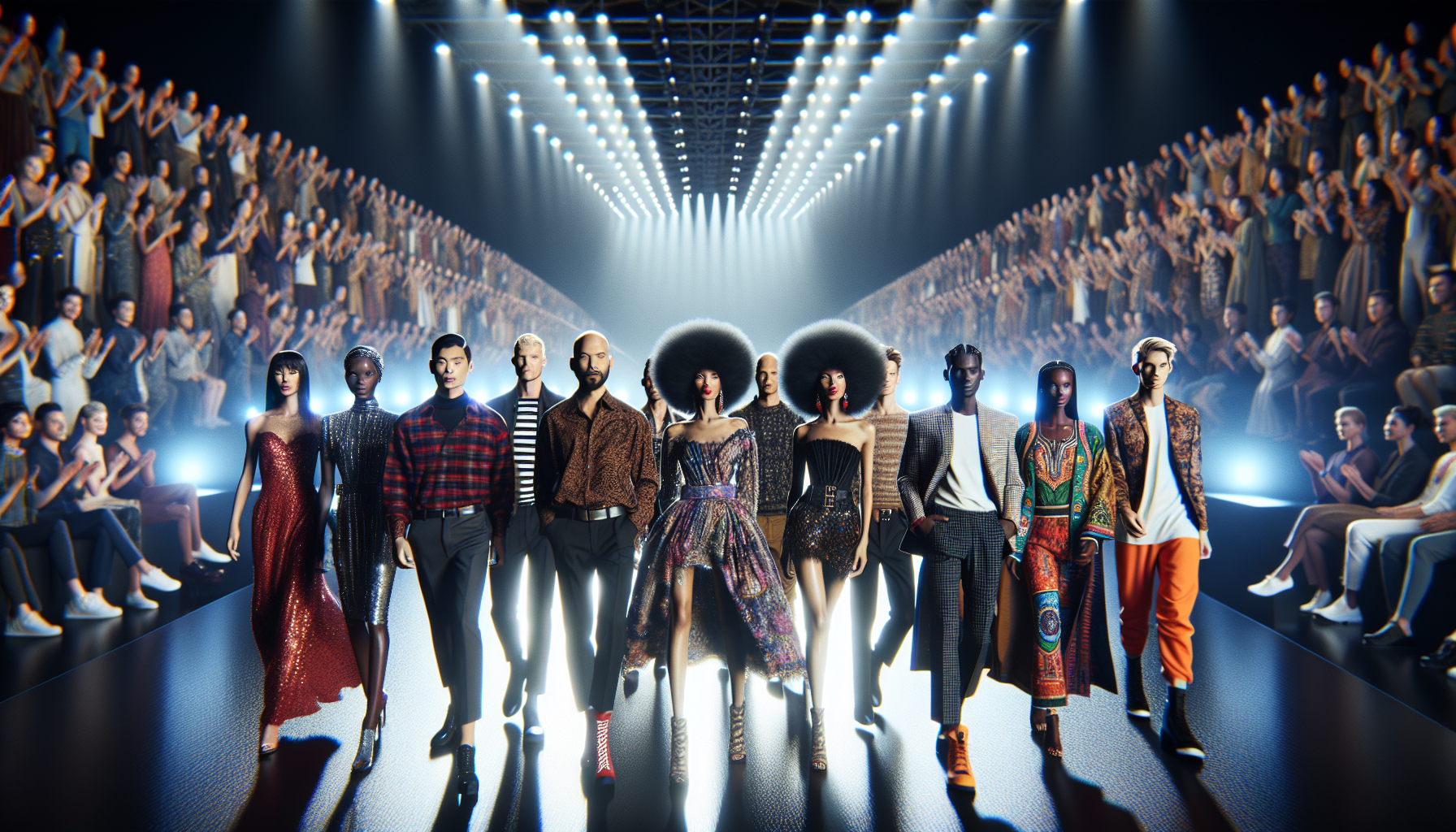The fashion industry has been a beacon of style and glamour for decades, but it has also been critiqued for projecting an often unachievable image of beauty. For years, runways and magazine spreads featured a relatively homogenous group of models, adhering to strict body standards that promoted a singular, often unattainable beauty ideal. However, the tides are turning as the body positivity movement gains traction. Body positivity advocates accepting all bodies regardless of size, shape, age, race, gender identity, or physical ability.
Historical Context of Model Diversity
Historically, the typical runway model was tall, thin, and primarily caucasian – an archetype that left little room for diversity. This narrow view of beauty permeated the industry, influencing fashion and self-esteem worldwide. Frequent repercussions included a rise in body dissatisfaction and unhealthy eating habits among individuals trying to conform to this ideal.
Emergence of Body Positivity on the Runway
Transitioning from the past’s rigid norms, the early 2000s marked a gradual shift as a few designers began to challenge the status quo. Pioneers such as Jean Paul Gaultier and Betsey Johnson were among the first to include plus-size models and those of different ages and races in their shows. These initial steps sparked conversations that would grow louder with the advent of social media.
As people started voicing their demands for more inclusive representation, social media platforms became catalysts for change, promoting visibility for underrepresented groups and fueling the body positivity movement. Campaigns like #PlusIsEqual by Lane Bryant and Dove’s Real Beauty sketches brought the conversation to the mainstream, pressuring the industry to take note by showcasing natural bodies.
Celebrating Diversity in Contemporary Fashion
Today, the celebration of body diversity is becoming more prominent. We’ve witnessed an increase in the variety of models gracing the high-fashion runways. For instance, Rihanna’s brand, Fenty, has been a trailblazer in inclusivity, casting models of all sizes and ethnic backgrounds. Her Savage x Fenty lingerie shows are a vibrant celebration of body diversity, breaking away from the traditional fashion show format to create something more akin to a performance art piece that reveres all body types.
In addition, brands like Christian Siriano and Chromat regularly feature a diverse lineup of models, including those who are plus-size, transgender or have disabilities. This inclusivity sends a powerful message that fashion is for everyone and that beauty is not confined to a particular standard. These brands are applauded for using inclusivity as a marketing tool and weaving it into the fabric of their brand identity.
The Impact of Inclusivity on Consumers
The representation of different bodies on the runway profoundly affects consumers. It challenges the pernicious, deeply ingrained belief that one must fit a specific mold to be fashionable or to enjoy fashion. With more diverse models visible in fashion campaigns and shows, consumers of all backgrounds feel seen and represented. This inclusivity enhances the relationship between brands and their customers, as shoppers are likelier to engage with and remain loyal to brands that acknowledge their existence and value their business.
The broader impact of this inclusivity also extends to improving self-esteem and body confidence among consumers. When individuals see models that look like themselves, it normalizes their body type and reduces the stigma around bodies that deviate from the traditional fashion model archetype. Such positive representation can lead to a healthier body image and improved mental health for many.
Challenges and the Road Ahead
Despite progress, challenges remain in the journey towards genuinely inclusive representation in fashion. Critics argue that some brands utilize diversity as a trend rather than a commitment, leading to tokenism or performative inclusivity that doesn’t contribute to real change. The call for genuine and consistent representation in all facets of the fashion industry—from the runway to management—continues to be a pressing issue.
Furthermore, size inclusivity, in particular, is an area where many brands still fall short, often offering limited options for plus-size individuals or failing to carry their entire range in extended sizes. As the movement unfolds, it’s clear that body positivity isn’t just about showcasing diversity but also ensuring that fashion is accessible to all in practice and imagery.
Conclusion
The fashion industry’s adoption of body positivity signals a new era where diversity on the runway is celebrated, not merely tolerated. As society evolves, the fashion world must continue to reflect its consumers’ diversity, offering various perspectives on beauty, style, and self-expression. While there’s still work to be done, the strides made in promoting body positivity on the runway inspire hope for a more inclusive and empowering sartorial future. The ongoing conversation and action for change encapsulate fashion’s transformative potential—not just in our wardrobes but in how we see and accept ourselves and others.

